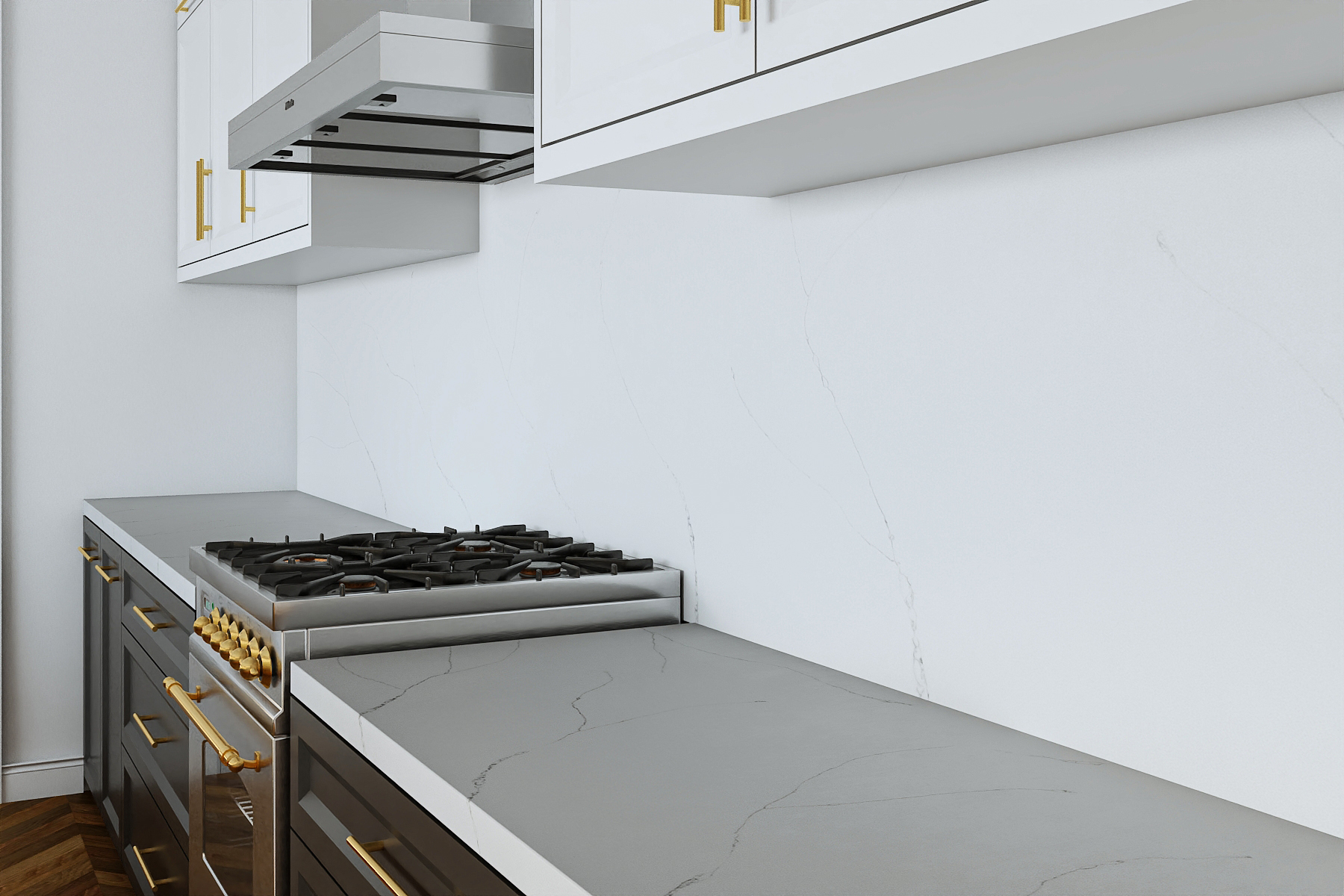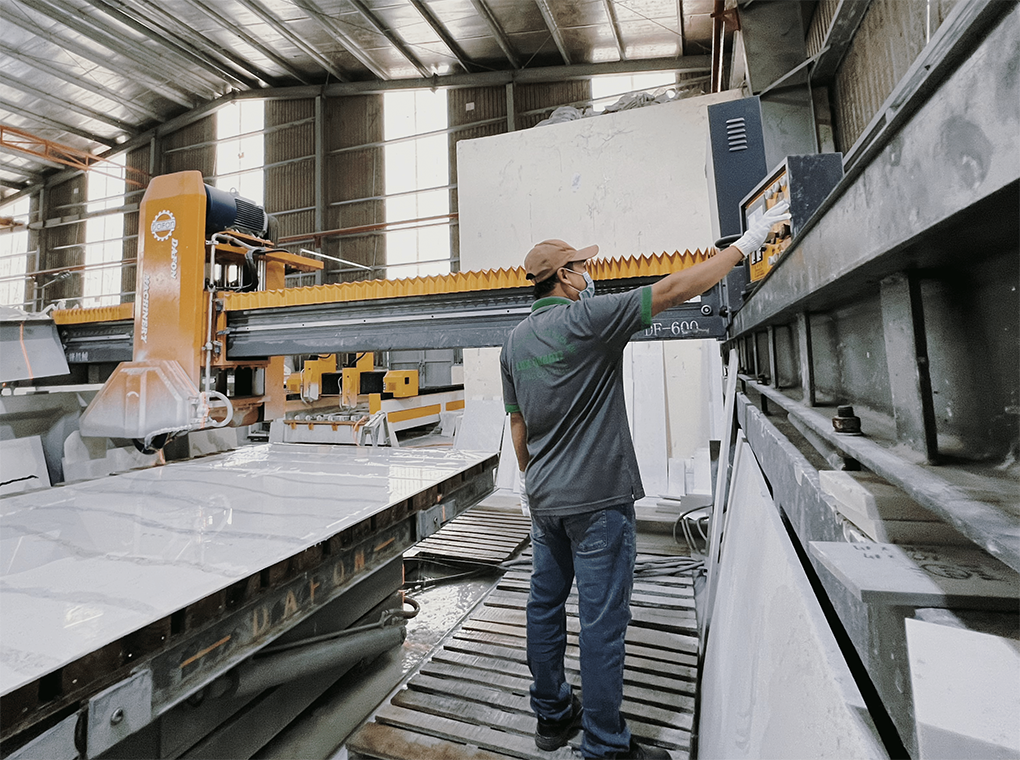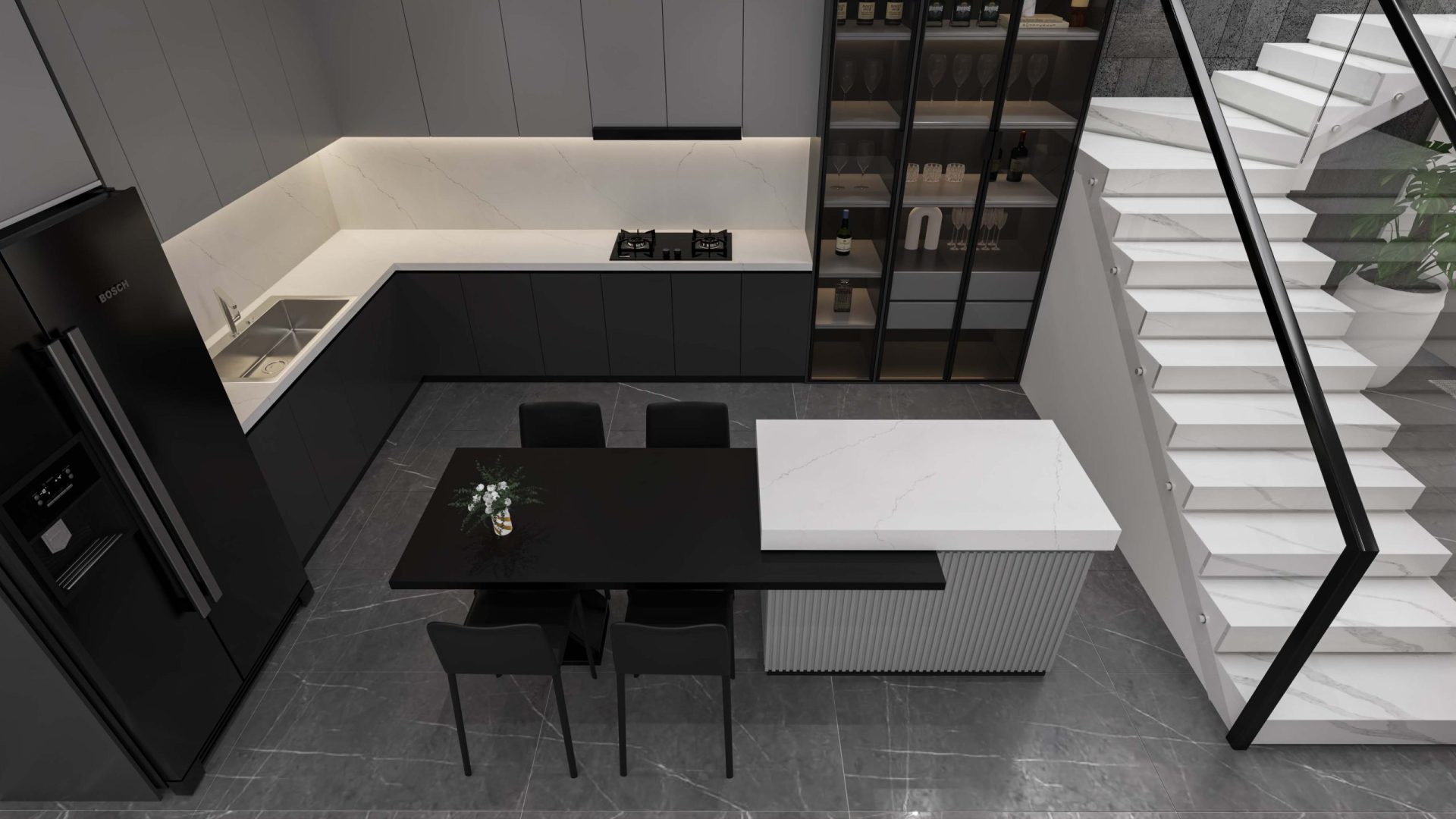Quartz worktops are becoming more and more common in houses because of their enduring quality and opulent appearance. This blog post will walk you through the detailed process of how quartz countertops are madeand why they are an excellent choice for your home.
Understanding How are Quartz Countertops Made
Even though quartz is abundant in nature, manufacturers don’t just mine it and cut it into countertop slabs. Instead, they use engineered quartz for these elegant surfaces. This process begins with mining natural quartz crystals from deep quarries. They then extensively clean these raw crystals and grind them into fine dust to form the base of the countertops.

Creating the Blend: How Quartz Countertops Made Unique
Once we grind the quartz to dust, we can transform it into something spectacular. Polymer resins and vibrant pigments combine with the ground quartz, resulting in approximately 90% quartz and 10% resins and colors. This precise blend is crucial, as it determines the look and enhances the functional properties of the countertops, such as their stain and scratch resistance. Understanding how are quartz countertops made helps us appreciate the science and craftsmanship that go into every slab.
Molding and Pressing
We then pour the quartz mixture into large molds to shape the countertops to tailor each mold to ensure uniform slabs. Once filled, the mixture undergoes vibro-compression under vacuum. This technique involves vibrating the mixture under intense vacuum pressure, which compacts the material. The result is incredibly dense and tough final slabs.
Curing the Slabs
After shaping, we transfer the slabs to a curing kiln and heat them to solidify the resin binders. This process is essential for the slab’s strength. It involves precise temperature control to start the binding reaction without harming the quartz’s integrity.
Quality Assurance and Polishing
Every slab of quartz undergoes a stringent quality assurance process. Technicians inspect each slab for flaws that could compromise the beauty or durability of the countertop. The technicians then polish the approved slabs to a perfect sheen, enhancing the natural luster of the quartz. This step ensures visual appeal and makes the surface smooth and more resistant to microbial growth.
Environmental Impact
Making quartz countertops considers environmental impacts. It reflects the sustainable practices integral to how are quartz countertops are made. Most manufacturing facilities use methods that reduce waste and recycle materials wherever possible. The water used in polishing and fabrication is often recycled. This helps reduce the environmental footprint of these beautiful countertops.

Installation and Maintenance
Professionals should install quartz countertops to ensure accuracy and care. Once installed, maintaining your quartz countertop is easy. It doesn’t need sealing and is naturally resistant to stains and scratches. Regular cleaning with soap and water is typically sufficient to keep it looking pristine.
Understanding the manufacturing process of quartz allows you to appreciate the craftsmanship involved. These stunning countertops seamlessly blend beauty and functionality. Choose Lux Quartz Vietnam for countertops that transform your living space into a perfect blend of art and engineering.
See more:


















